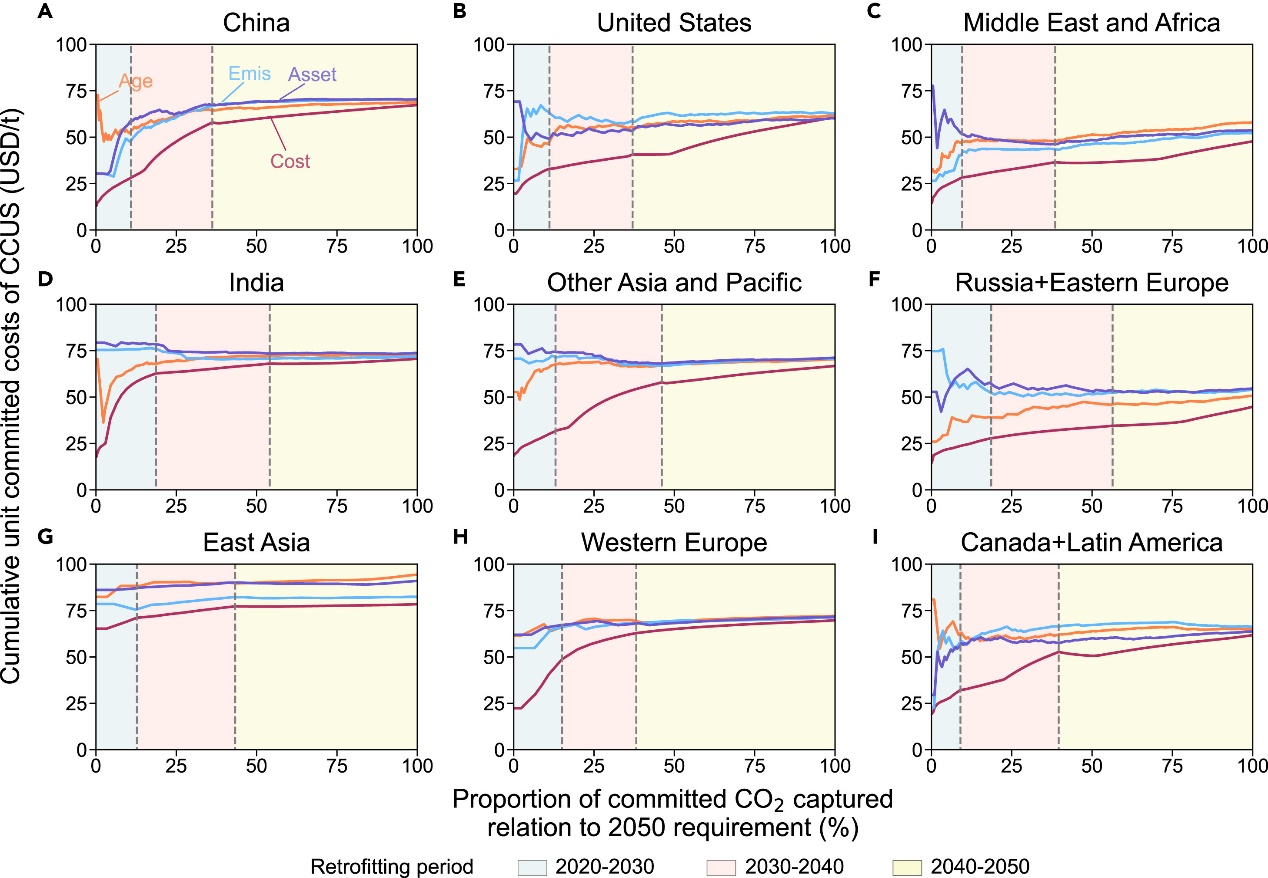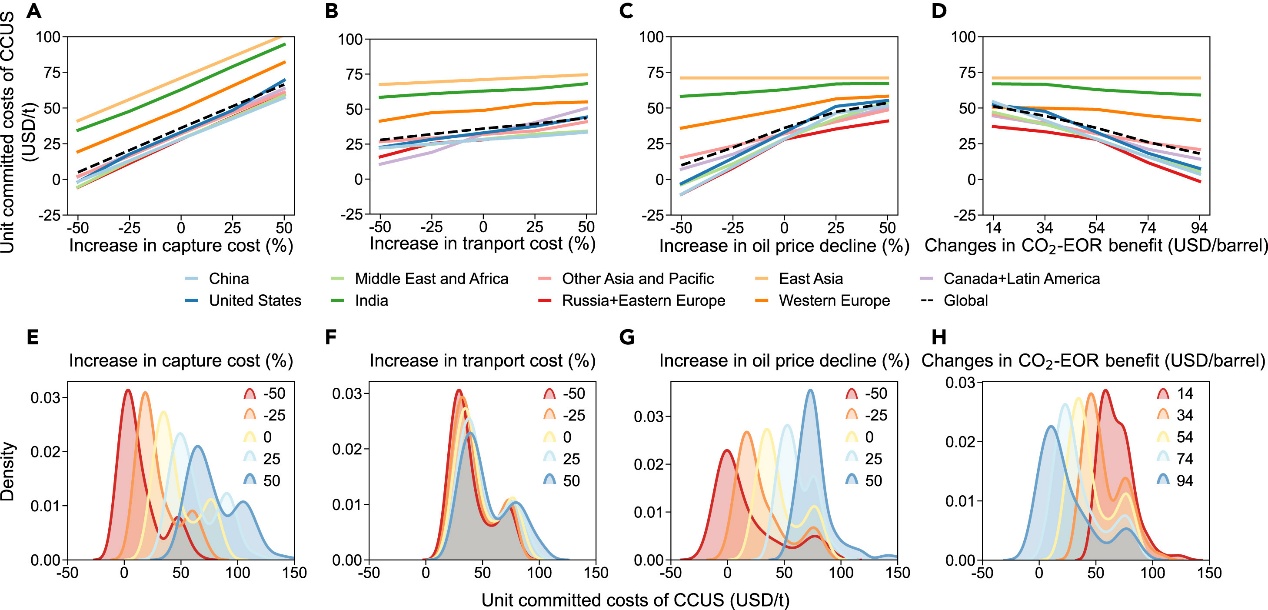Thermal power, steel, cement, and other key global industries, as critical areas for climate governance, account for over 50% of global anthropogenic emissions. Currently, these sectors are undergoing strategic transitions involving large-scale facility retirements or low-carbon retrofits. Traditionally, decisions on facility retirement or retrofitting have been based on technical indicators such as operational lifespan, production capacity, emission intensity, and energy efficiency. However, as carbon capture, utilization, and storage (CCUS) technology emerges as a vital option for hard-to-abate industries, the deployment of CCUS in industrial facilities heavily depends on the accessibility of geological storage resources. Relying solely on technical indicators for pathway design no longer meets transition needs. Therefore, coordinating the spatial alignment between facility technical attributes and storage resources will become a key determinant of industrial transition pathways and cost-effectiveness.
To address this challenge, Tong Dan’s Research Group from the Department of Earth System Science (DESS) at Tsinghua University developed a facility-level technology evolution-source-sink matching coupled model based on technical indicators (including operational lifespan, production capacity, emission intensity, and energy efficiency), spatial distribution, and emission characteristics of over 40,000 key industrial facilities worldwide. This model proposes optimized transition pathways for facilities under CCUS geological storage resource constraints. The study further reveals the spatial mismatch between facility technical attributes and the accessibility of geological storage resources, quantifies cost-benefit relationships under different deployment strategies, and evaluates the potential of precision deployment for low-cost transitions. By establishing a sensitivity analysis framework, the study elucidates the mechanisms by which key cost factors and pipeline deployment models influence CCUS economic viability.
The findings indicate that under technically driven transition pathways, facilities with shorter lifespans, larger scales, and higher emission intensities are typically prioritized for retention and retrofitting. However, such facilities may not necessarily align well with geological storage resources spatially. If retirement and retrofitting plans are based solely on technical indicators without considering the feasibility and economic viability of mid-to-long-term CCUS deployment, facilities with potential for CO₂-enhanced oil recovery (EOR) and storage may be prematurely phased out, missing critical opportunities to leverage high oil price windows for CO₂-EOR and achieve low-cost emission reductions.
In contrast, a global CCUS optimization deployment strategy aimed at cost minimization could reduce cumulative deployment costs by over $15 per ton in the near to medium term, creating more favorable conditions for CCUS technology to transition from demonstration to commercialization (Figure 1). For example, in China and the U.S., this strategy could lower cumulative deployment costs by approximately $19.2 and $11.9 per ton, respectively. Some facilities not prioritized under technically driven pathways, due to their proximity to CO₂-EOR storage resources or shorter transport distances, become pivotal for low-cost, large-scale CCUS deployment. In China, around 20% of facilities prioritized for CCUS deployment before 2030 have been operational for over 20 years, indicating that CCUS deployment will reshape the priority order of industrial facility transitions to some extent.

Figure 1 Low-cost opportunities for CCUS deployment under the Cost strategy
The study further highlights that key cost factors—such as capture costs, transport costs, the rate of future oil price declines, and the pricing mechanism for CO₂-EOR benefits—significantly influence CCUS deployment patterns (Figure 2). If oil prices decline faster than expected, while narrowing cost disparities among facilities, the overall economic viability of CCUS would diminish, with unit deployment costs rising above $50 per ton. In such cases, support mechanisms like fiscal subsidies, carbon markets, or revenue guarantees would be necessary. Compared with sector-specific independent deployments, a multi-sector shared pipeline model could coordinate capture layouts across industries, optimize resource allocation, and enhance system efficiency, potentially saving tens of billions of dollars globally. This underscores the urgent need for cross-sector collaboration.

Figure 2. Variations in unit committed costs of CCUS deployment due to changes in key cost sensitivities
The study proposes optimized transition pathways for global key industries under CCUS geological storage resource constraints, emphasizing the importance of aligning facility-level technical attributes with storage resources spatially to enhance the economic benefits of low-carbon transitions through targeted deployment. The model framework also offers methodological insights for other spatially dependent low-carbon technologies, such as wind, solar, and hydrogen. It is important to note that large-scale CCUS deployment still faces real-world challenges, including policy incentives, technological maturity, and capital investment. Future research will further develop an integrated assessment framework incorporating spatial optimization and multi-dimensional constraints to provide systematic technical pathway evaluations and engineering design support for deep decarbonization in the industrial sector.
The related research findings, titled "Cost-competitive plant-by-plant strategy for spatially resolved CCUS deployment toward carbon neutrality in global key industries," were published online on July 18 in One Earth, a journal under Cell Press.
Yan Xizhe, a Class 2022 Ph.D. candidate from Tsinghua DESS, is the first author of the paper, and Associate Professor Tong Dan is the corresponding author. Co-authors include Professor Zhang Qiang and Associate Professor Li Wei from Tsinghua DESS, Professor Liu Yu from the College of Urban and Environmental Sciences (CUES) at Peking University, Professor Steven J. Davis from Stanford University, Associate Researcher Xiao Qingyang from the School of Environment (SOE) at Tsinghua University, postdoctoral researcher Guo Yaqin, Ph.D. graduates Xu Ruochong and Qin Xinying, and Ph.D. candidate Zheng Dongsheng from Tsinghua DESS, and postdoctoral researcher Liu Yang, and Ph.D. candidates Wang Huaxuan and Fu Yujia from Tsinghua SOE. The research was funded by the National Key Research and Development Program of China.
Full-text link: https://www.sciencedirect.com/science/article/pii/S2590332225002040
Written by Tong Dan and Yan Xizhe